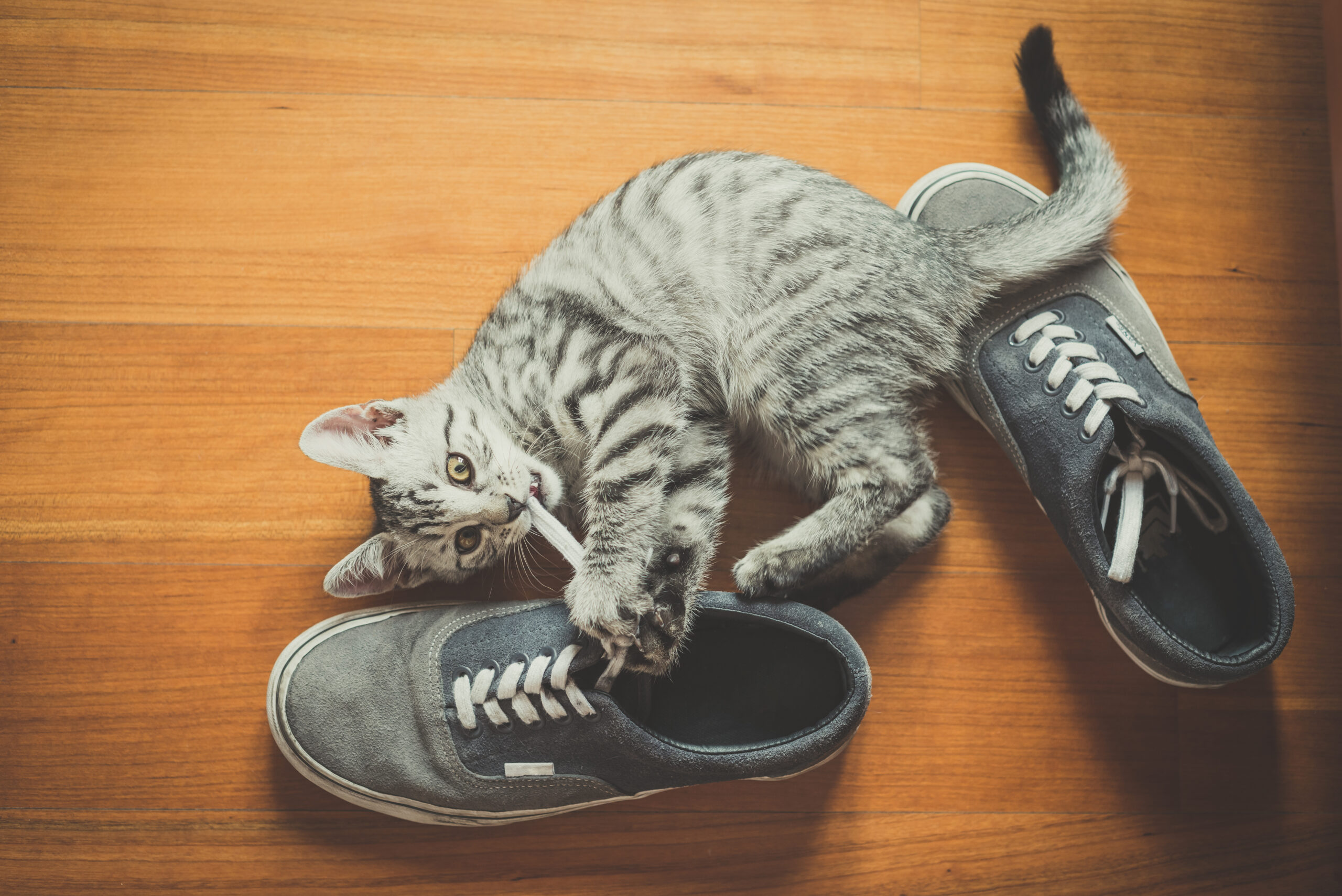The American Veterinary Medical Association found less than 50 percent of cat owners took their cats to the veterinarian for preventive care, compared to just under 80 percent of dog owners.
This may be due to a prevailing idea that felines—especially ones who stay indoors—are “low maintenance” compared to canines. But even if your cat spends their days within the safety of your home, they aren’t immune to illness and disease brought in from the outside world.
“Even for indoor cats, certain vaccinations are generally recommended due to the widespread nature of some diseases and their potential severity,” Erin Katribe DVM, Medical Director, at Best Friends Animal Society, says. “These diseases do not require direct contact with another cat. Pathogens can be transmitted indirectly through contaminated clothing, footwear, or via household members or guests.”
There’s no need to be overly anxious, or to start living in a bubble. Instead, here’s what to know about how vaccinations can set your indoor cat up for a healthy life.
- The main core vaccine for cats is FVRCP, which protects your cat from feline calicivirus, feline distemper, and feline herpesvirus.
- The rabies vaccine is not considered a core vaccine, but is recommended and is often required by law, depending on where you live.
- While not required, your vet might recommend also vaccinating your cat against feline chlamydia and bordetella.
Core & noncore vaccines
You may have heard these terms thrown around, but what do they mean?
Veterinarians recommend core vaccines for all cats to protect them from severe and/or common diseases. Core vaccines include FVRCP (more on this one in a minute), rabies, and FeLV (feline leukemia).
Noncore vaccines are optional and veterinarians will recommend them if they believe your cats are at risk of exposure to these specific diseases. Talk to your vet about which vaccines make the most sense for your cat.
Making sense of FVRCP, the three-in-one core vaccination
That’s a big jumble of letters. Let’s take FVRCP apart and see what it covers.
FVR stands for Feline Viral Rhinotracheitis, which leads to upper respiratory tract illness and pneumonia. The “C” is feline calicivirus, also known as FCV. This is also an upper respiratory illness that can cause chronic stomatitis, pneumonia, and if untreated can infect internal organs and be fatal.
The “P” is for panleukopenia, which is another word for feline distemper or FPV. It attacks bone marrow and lymph nodes, which can lead to low blood counts and the inability to fight infections.
FVRCP also protects your cat from FHV-1, which is the technical term for the feline rhinotracheitis virus (a.k.a. feline herpesvirus). Sadly, this high-risk virus can lay dormant in your kitten’s nerves and reactivate itself at a later date. Vaccinating your kitty will prevent a long battle with FVH-1 and symptoms like sneezing, sore throat, and pneumonia.
Kittens receive the FVRCP vaccine starting at age 6 to 8 weeks, and then every four weeks after that until they are 16 to 20 weeks old. This vaccine bolsters your cat’s immune system. After that last shot between 16 and 20 weeks, cats should receive a booster at the one-year mark, which is then repeated every three years.

Rabies vaccinations (which might be required by law)
Rabies doesn’t fall under “core vaccines.” However, most towns have laws requiring rabies shots for cats because this fatal disease can be transmitted to humans. Be sure to check your community’s policies when it comes to vaccinating your cat against rabies.
“The risk of exposure is low for indoor-only cats,” Katribe admits. Still, this is a nasty disease, and one worth avoiding. “Any cat may unexpectedly escape outside, and even a short interaction with another animal may be enough to transmit any of these diseases. New cats introduced into the home may also bring in diseases, even if they are not showing active signs of illness at the time of introduction.”
Rabies starts slow and moves quickly; it usually takes two months for signs of aggression, disorientation, and death to occur in an infected cat.
Cats get their first rabies shot between 14 and 16 weeks followed by a one-year booster. At age three, they get the shot again, and it’s repeated every three years.
FeLV
This vaccine protects your cat against feline leukemia, which is transmitted from the salvia, urine, and feces of an infected cat.
It‘s a noncore but recommended vaccine because feline leukemia is highly contagious among cats. Most veterinarians recommend indoor/outdoor cats get the FeLV vaccine yearly. Indoor cats can get the vaccine every two years.
Feline chlamydia
Feline chlamydia typically affects kittens under 9 months of age. Symptoms may include discharge from the eyes, loss of appetite, and a fever.
If there is a higher risk of infection—in a household with multiple cats for example, especially if there has been a case of chlamydia in the past—it might be a good idea to vaccinate your kitten. The first vaccine is given around 8 to 9 weeks of age, and the second at 12 weeks.
Bordetella
Kittens in shelters can develop bordetellosis bronchiseptica, a highly contagious bacterial infection caused by bordetella (known as “kennel cough” in dogs), a bacteria that causes upper respiratory illness. The non-core bordetellosis vaccine, which is usually given to eight-week-old kittens, protects them from the disease.
Getting your cat to the vet
The scuffle required to get cats safely to the veterinarian can be stressful, causing cat parents to skip annual visits altogether.
Here are a few ways to get your cats into their carriers and on the road to good health:
1. Use one carrier per cat. Don’t squish a pair of kitties into one carrier—they’ll be cramped, and trying to wrangle them both inside while safely locking the carrier door will stress out the cats (and their owner).
2. A day or so before a vet visit, keep pet carriers out in your home with the doors open. Take a blanket or sweater that carries your scent and lay it inside the carrier.
3. Place a few treats inside the carrier to entice your cat inside.
4. Don’t feed your cats a full meal before you take them in the car to the veterinarian; if they get sick, they’ll throw up in the carrier. That’s no fun.
5. If all else fails, find a veterinarian who makes house calls.
Caring for your cat
“The decision of whether to vaccinate your individual cat—and which, if any, vaccines to give—is up to you and your veterinarian,” Katribe says. “My top recommendation is to discuss cat vaccinations with your vet at each annual visit.”
We know you only want what’s best for your cat, which is why pet insurance, like coverage offered by Lemonade could be the perfect companion to help take care of unexpected vet bills. Plus Lemonade offers a number of preventative packages and add-ons to help cover routine care (like vet-recommended vaccines and wellness exams), as well as other issues that might come up.
Applying for pet insurance is fast, and so easy that your cat might be able to do it. (Don’t let your cat do it.)





